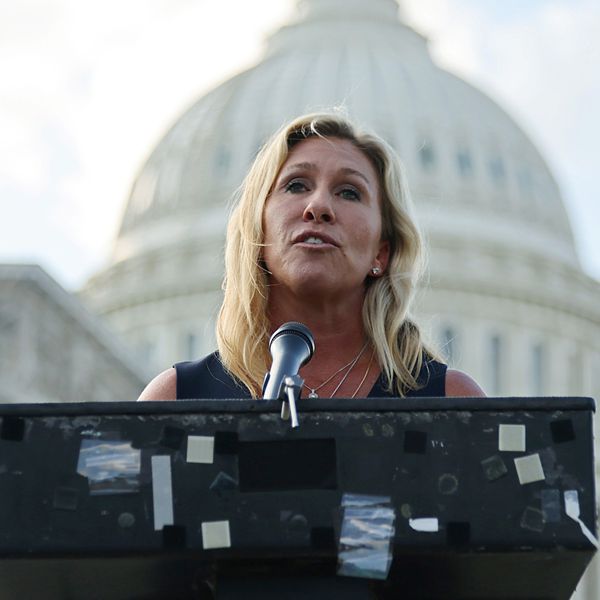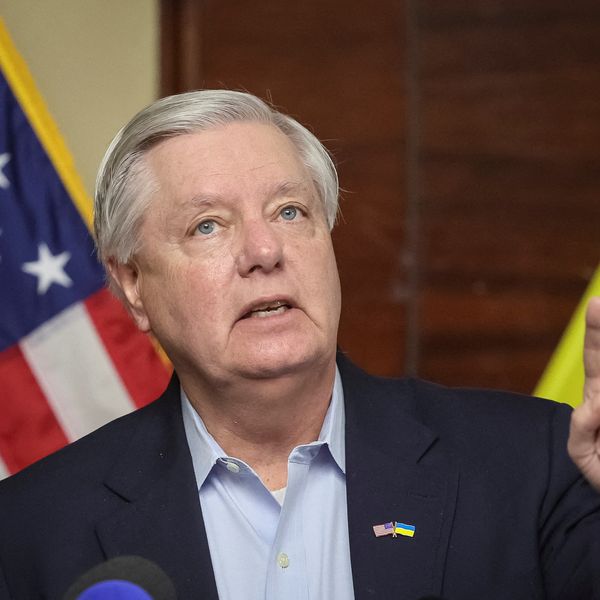This article is part of our weeklong series commemorating the 70th Anniversary of the Korean War armistice, July 27, 1953.
Can President Biden strengthen the extended deterrence over South Korea as he promised during his summit meeting with President Yoon Suk Yeol in April in a way that reduces the South’s interest in developing its own nuclear weapons without increasing the North’s arsenal?
Is it possible that the U.S. security commitment to defend its ally helps the United States focus on maintaining the peace and security of the status quo, thus perpetuating the Korean War that has been sustained with an armistice for 70 years, and now full of risks for escalation to nuclear exchanges with North Korea or for expansion to a new cold war?
While the Biden administration succeeded in crafting the Washington Declaration that helped quiet South Korean voices clamoring for their own nuclear weapons, its success only brought these challenging questions to the fore. Now it has to answer them as it implements the Declaration.
On July 18, the Nuclear Consultative Group (NCG), a key component in the Washington Declaration designed to restore Seoul’s confidence in Washington’s commitment to extended deterrence, held its inaugural meeting in Seoul.
Co-chaired by South Korea's Principal Deputy National Security Adviser Kim Tae-hyo and U.S. National Security Council Coordinator for Indo-Pacific Affairs Kurt Campbell, the NCG held discussions on the systems and procedures of consultation between the allies as well as a plan for the South’s conventional support for U.S. nuclear operations.
The meeting’s primary accomplishments were clearly summarized by Kim: “the U.S. side demonstrated its resolve that the North’s nuclear attack on the Republic of Korea … will lead to the end of its regime, and our side made it clear that we completely trust the U.S. commitment to extended deterrence.”
Their words were not empty. The NCG was immediately followed by a visit on the same day of an Ohio-class nuclear submarine to a key naval base in Busan, 200 miles southeast of Seoul where the meeting was held. Carrying up to 20 Trident II nuclear missiles, the USS Kentucky (SSBN-737) made the port call in a clear display of Washington’s commitment to the defense of its ally, according to the South’s defense ministry. The visit had been mentioned in the Washington Declaration in April by Presidents Biden and Yoon who agreed to further enhance the “regular visibility” of strategic assets on the Korean Peninsula.
The NCG’s inauguration, reinforced by the first visit by an SSBN since 1981, could not have demonstrated Washington’s commitment to extended deterrence more convincingly.
That was precisely the problem for China, however. “China is concerned over ROK-US Nuclear Consultative Group's meeting to reinforce the enforcement of US’s extended deterrence,” said Liu Xiaoming, Special Representative of the Chinese Government on Korean Peninsula Affairs, in a tweet. In another, he noted that Washington dispatched strategic assets to the Korean Peninsula to engage in military activities and raised questions.
“Has this been conducive to resuming dialogue? Or has it only deepened the rift and made the tensions worse?” Looming behind his tweets were his, and perhaps Beijing’s, awareness that a Trident II missile, even if launched from Korea, could deliver multiple nuclear warheads to a target as far as 7,500 miles away. “Reality has given us the answer,” he said.
North Korea responded more directly with action. It launched two ballistic missiles into the East Sea in the early morning the day after the USS Kentucky’s visit. Lest there be any misunderstanding about the North’s intent, it made sure the short-range missiles flew approximately 340 miles from the Sunan area of Pyongyang; that is, the precise distance to Busan where the USS Kentucky was harbored.
The launches reinforced the message delivered by Kim Yo Jong, the Deputy Director of the Publicity and Information Department of the Workers’ Party of Korea and, more important, the sister of North Korean leader Kim Jong Un, two days earlier. She had called the U.S. nuclear-capable submarine's visit “a foolish act that could put its security at risk.”
The missile launch followed an earlier test-firing of a longer-range missile that Kim described ominously as only the “beginning.” On July 12, North Korea test-fired an ICBM that it identified as Hwasong-18, thus advertising the fact that it has continued to improve its ability to lob a nuclear warhead at the United States. The solid-fuel-powered ICBM reached its apogee of over 6,000 km, doubling the previous test’s record three months ago. The photos and announcement, released by its official media, revealed that the missile was launched from a road-mobile vehicle and its second stage flew at a different angle than the first stage.
Furthermore, the Hwasong-18 is likely capable of carrying multiple warheads and decoys, according to Ted Postol, a nuclear expert at the Massachusetts Institute of Technology. The combination of solid fuel, a mobile launcher, independently adjustable stages, and multiple warheads makes Hwasong-18 not only a direct threat to the U.S. continent but also a more challenging one for U.S. missile defense systems to track and intercept.
The ICBM test was met with a series of punitive measures by Seoul, Washington, and Tokyo. The Yoon Suk Yeol administration immediately penalized the North by sanctioning four individuals and three entities for their involvement in the financing and technical development of the missile. The Biden administration also dispatched a B-52H strategic bomber to South Korea as part of a combined air drill together with South Korea’s F-15K fighters the following day. Finally, South Korea, the United States, and Japan staged a trilateral missile defense exercise in international waters of the East Sea on July 16 that featured three Aegis-equipped destroyers — the South's ROKS Yulgok Yi I, the U.S.' USS John Finn and the Japan Maritime Self-Defense Force's JS Maya.
These responses raise lingering questions about their effectiveness. Sanctions have failed to stop Pyongyang’s arms development in the past. So have these military drills. The North has used them as an excuse to walk away from diplomacy, as Kim Yo Jong did recently.
In response to U.S. national security adviser Jake Sullivan’s suggestion on July 16 for unconditional talks on the North’s nuclear program, Kim Yo Jong rejected the proposal, citing Washington’s extended deterrence as the reason. She emphasized that U.S. efforts to strengthen the extended deterrence would serve only to push Pyongyang “farther from the negotiating table.” In the meantime, discussions at the UN Security Council broke down without producing any statement as differences between the U.S. and its allies on the one side and Russia, China, and North Korea on the other appeared to draw a new cold war fault line.
The military drills might have been “the swift deployment of the U.S. extended deterrence asset” or “an opportunity to enhance our military's response capabilities against ballistic missiles and improve security cooperation among South Korea, the United States, and Japan,” as South Korean officials characterized them. To the extent that they succeed in communicating U.S. resolve to achieve the “end of that [North Korean] regime,” as stated in the 2022 Nuclear Posture Review, however, they convince Pyongyang of the imperative to ensure its survival. Kim Jong Un vowed just that. After the ICBM test, he reiterated his commitment to “continue military offensive until the U.S. abandons its hostile policy.”
The Korean War thus continues, escalating the arms race and intensifying the security dilemma on the peninsula. The war has become perpetual.














